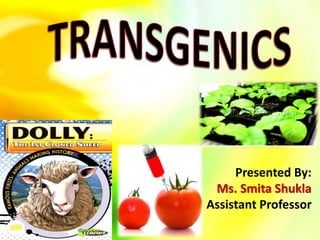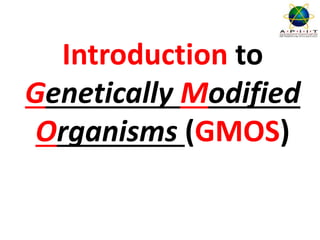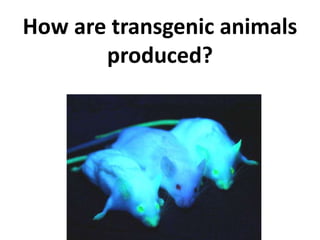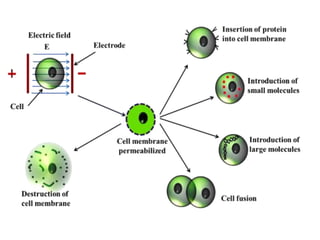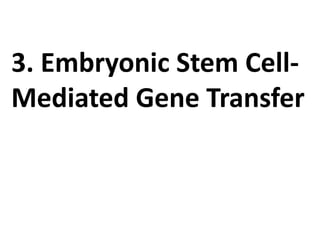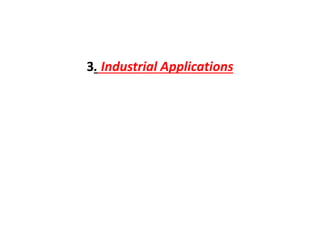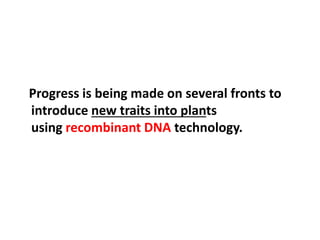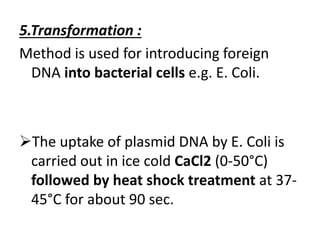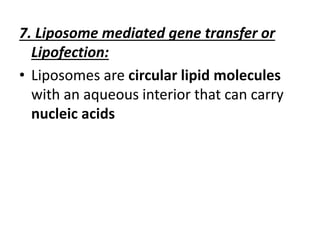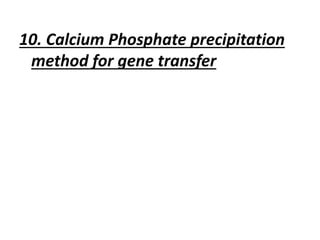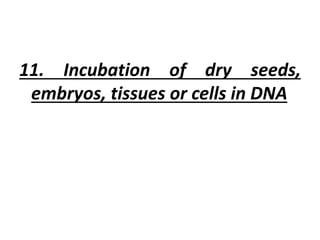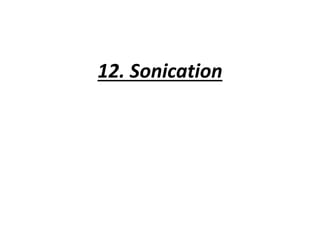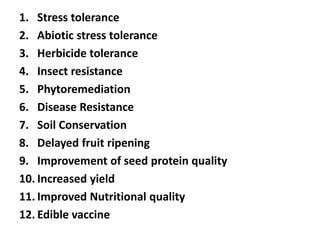This document discusses the production of transgenic animals and plants. It describes three main methods for producing transgenic animals: DNA microinjection, retrovirus-mediated gene transfer, and embryonic stem cell-mediated gene transfer. It also discusses 11 methods for transforming plants, including Agrobacterium-mediated transformation, biolistic transformation, and floral dip transformation. Finally, it lists some beneficial traits that have been engineered in transgenic plants, such as stress tolerance, herbicide tolerance, and increased nutritional quality.
